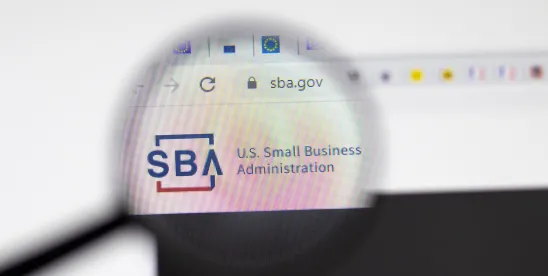| Go-To Guide: |
|
On Aug. 22, 2025, the SBA issued a proposed rule to increase the monetary-based size standard across 263 industries. The proposed rule is one of two proposed rules that will review size standards of industries grouped by the type of size standard measurements (i.e., monetary-based size standards and employee-based size standards). Size standards define whether a business is “small,” and therefore eligible for government programs and preferences reserved for small businesses. The proposed rule is part of the SBA’s broader effort to account for inflation, market shifts, and the evolving landscape of small business participation in federal contracting and the Small Business Jobs Act. No size standards were proposed to decrease.
Proposed Size Standards and Methodology
Under the Small Business Jobs Act of 2010, the SBA examines small business size standards at least once every five years and makes necessary adjustments to reflect the current industry structure and federal market conditions. These size standards are based on either the average annual receipts over the past five fiscal years or the average number of employees over the past 24 months. A business will qualify as small for a government procurement if it meets the size standard associated with the North American Industry Classification System (NAICS) code identified on the solicitation.
The proposed rule aims to broaden the pool of small businesses contracting with the federal government by raising size thresholds across 263 industries, enhancing competition and potentially reducing procurement costs. This means that small businesses nearing their current size limits might extend their small business status. For instance, the size standard for the following NAICS codes—and others—might make significant jumps:
- NAICS 541380 (Testing Labs): $19 million→ $23.5 million
- NAICS 486210 (Natural Gas Pipelines): $41.5 million → $46 million
- NAICS 561330 (Professional Employer Organizations): $41.5 million → $47 million
- NAICS 541310 (Architectural Services): $12.5 million → $16 million
In developing these proposed increases, the SBA applied its recently revised “Size Standards Methodology,” which was issued on Sept. 12, 2024. The revised methodology assesses size standards with the following primary factors: (1) average firm size, (2) degree of competition within an industry, (3) start-up costs and entry barriers, and (4) distribution of firms by size. For industries averaging $20 million or more in federal contract dollars, the SBA considers a fifth primary factor to examine the success that small businesses are having in receiving federal contracting assistance. The SBA does this using the disparity ratio approach.
Under the disparity ratio approach, the SBA calculates the ratio of the small business share of contract obligations to the small business share of industry receipts. Additionally, the SBA computes a second disparity ratio that compares the small business share of the number of contracts to the share of small businesses that are willing, ready, and able to compete for federal contracts. If an industry's disparity ratio is less than 0.8, the SBA considers the current size standard for that industry as inadequate, thereby warranting an upward adjustment of the current size standard. If the disparity ratio is 0.8 or higher, small businesses are said to be represented well in the federal market, and the SBA considers the current size standard for that industry as adequate.
The SBA also proposed using FPDS.gov and SAM.gov data to calculate the 20th and 80th percentile values of industry factors for evaluating size standards at the subindustry level, commonly referred to as “exceptions.”
Potential Implications of Increased Size Standards
The proposed rule may be a welcome change for federal agencies and small businesses approaching their size standards. Federal agencies may benefit from the change because there would be a larger pool of small businesses from which to draw for their small business procurement programs and theoretically at lower prices. Small businesses close to exceeding the current size standards would be able to retain their small business status until they breach the revised size standards. However, the increased size standards may also broaden competition with larger businesses that are ineligible under current standards but would become eligible under the increased size standards.
The SBA is seeking public comments on the proposed changes, with a deadline for submissions set for Oct. 21, 2025. The SBA also announced that a separate proposed rule addressing employee-based size standards will be released soon. A thoughtful review of the proposed rule is important for small businesses that rely on set-aside opportunities to maintain and grow their federal government contracting work.
Millie Koehler contributed to this article







 />i
/>i
